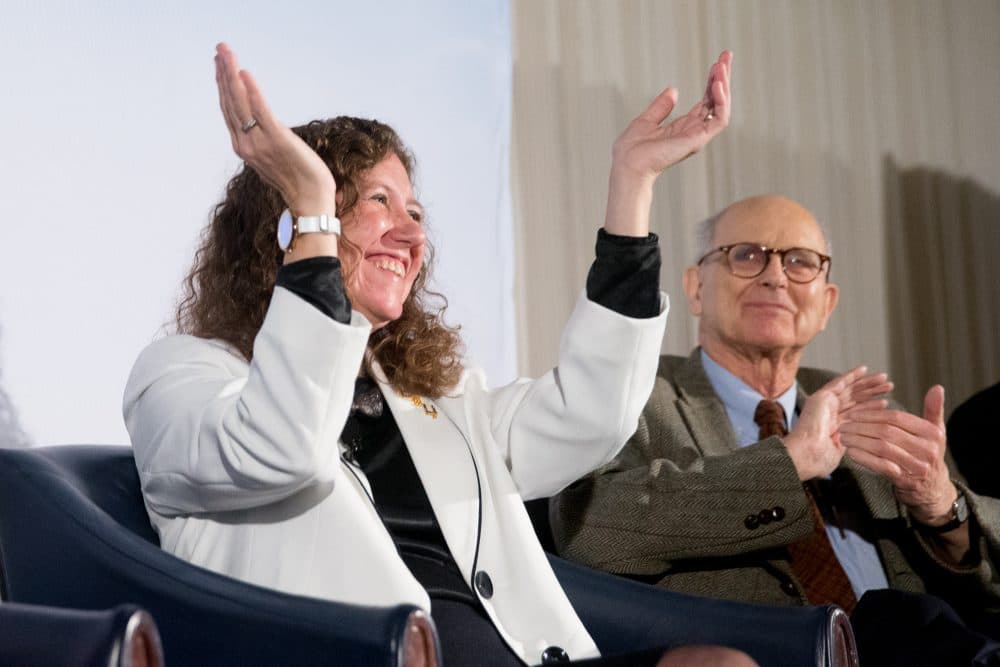Advertisement
Profile Of A Scientist: Detecting Gravitational Waves And The Fabric Of The Universe
Resume
As part of a weeklong series profiling scientists, Here & Now's Jeremy Hobson speaks with Gabriela Gonzalez, professor at Louisiana State University, and spokesperson for the LIGO Scientific Collaboration.
In February, LIGO scientists announced that the first evidence of gravitational waves had been detected from the collision of two black holes a billion light years away from earth. Gravitational waves were first predicted by Albert Einstein in his Theory of General Relativity, published 100 years ago.
View other stories in our series, "Science In America."
Interview Highlights: Gabriela Gonzalez
On what gravitational waves are:
Gravitational waves are ripples in space-time. Einstein's theory of general relativity says that gravity is not a force, but gravity is just the way masses live in a fabric of space-time, and when masses move, they make that space time wiggle, and if they move in certain ways, then those wiggles can travel away and carry energy away. And that's what we measure, those ripples in space time that were produced by black holes and traveled many, many years, a billion years to get to us, and get through us.
On why we would want to detect gravitational waves:
"We want to know everything about the universe, that's humanity. We are very, very curious."
Gabriela Gonzalez
This has been a dream of many hundreds of people, many decades now. First of all, because it's a very cool prediction of Einstein's theory. But that's not worth all the money and time we have invested. It's because it's a way, perhaps the only clean way to look at black holes and many other stars and many other systems but black holes in particular.
On we need to know about black holes:
We want to know everything about the universe, that's humanity. We are very, very curious. We have been since early times looking at the sky, what's the moon? Why does it move that way? We learned about black holes from Einstein's theory, too we wanted to learn more about those. Now, we have a very clean way of seeing how they grow, how big they are, where they are.
On the next big question for her research:
What I want to see is other kinds of colliding stars, like when two neutron stars collide together, they provide a longer chirp like the one you played earlier, and then they give birth to a black hole. And you see a black hole just being born.
On why she wanted to be a physicist:
When I was in high school, I fell in love with physics because I thought you could explain absolutely everything if you just knew physics. Now, I know that's not true, but that's what attracted me to it. Now I know that for every answer you pose, you find, you get 10 more questions.
Guest
Gabriela Gonzalez, professor in the department of physics and astronomy at Louisiana State University, and spokesperson for LIGO. It tweets @LIGO
This segment aired on June 14, 2016.